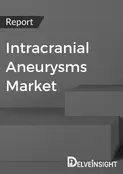The Intracranial Aneurysms Market is undergoing a transformative phase fueled by cutting-edge technological advances, improved disease pathophysiology understanding, and a growing commitment to early detection and personalized treatment solutions. Intracranial aneurysms—also referred to as cerebral aneurysms—are dilations in the blood vessel walls of the brain that pose significant health threats due to their risk of rupture, leading to subarachnoid hemorrhage (SAH), stroke, or even death.
This urgent clinical condition is a major driver behind the surge in research and development, significantly impacting the Intracranial Aneurysms Market Size, therapeutic advancements, and investment in related technologies.
Epidemiological Trends and Market Catalysts
Recent data indicates that intracranial aneurysms affect an estimated 2–5% of the global population. Most cases remain undiagnosed until a rupture occurs, making preventive screening and awareness crucial. These aneurysms are particularly common in women and older adults, especially those with lifestyle-related risk factors like smoking and hypertension.
The growing burden of comorbidities such as atherosclerosis, high blood pressure, and diabetes is also spurring market growth. Furthermore, the advent of advanced imaging technologies—like magnetic resonance angiography (MRA) and computed tomography angiography (CTA)—has improved early detection and accurate diagnosis, even in asymptomatic individuals.
Treatment Options: Surgical and Pharmacological Approaches
The treatment landscape for intracranial aneurysms is broadly segmented into surgical interventions and pharmacological therapies.
Surgical Treatments:
Traditional methods like surgical clipping and endovascular coiling remain foundational. However, newer innovations such as stent-assisted coiling and flow diversion techniques are revolutionizing care, especially for wide-neck or complex aneurysms. These techniques are bolstered by the rise of robotic neurosurgery and 3D image-guided systems, improving surgical precision and reducing recovery times.
Pharmacological Therapies:
While surgical treatment remains the gold standard for ruptured aneurysms, there is growing interest in pharmacologic strategies for unruptured cases or as post-operative adjunct therapies. Current research explores drugs that reinforce vascular walls, reduce inflammation, and address coexisting conditions like hyperlipidemia. Clinical trials are underway to evaluate neuroprotective agents, anticoagulants, and medications that prevent vasospasms—often a complication following aneurysmal rupture.
Pipeline Development and Therapeutic Innovation
The Intracranial Aneurysms Market is expanding with a robust pipeline that includes biologics, gene therapy candidates, and hybrid drug-device solutions. These therapies target the underlying molecular and genetic pathways involved in aneurysm formation and progression, offering hope for non-invasive alternatives to surgery.
Nanotechnology, genomics, and precision medicine are playing pivotal roles in this next wave of innovation. Drug delivery systems that specifically localize treatment to affected areas are being explored to maximize efficacy and minimize side effects. This pipeline progress underscores the market’s shift toward a more holistic, preventive, and targeted approach.
Key Intracranial Aneurysms Companies and Their Contributions
A mix of medtech powerhouses and biopharmaceutical innovators is shaping the competitive landscape. Prominent Intracranial Aneurysms Companies include:
-
Medtronic
-
Stryker
-
MicroVention (a Terumo company)
-
Penumbra, Inc.
-
Cerenovus (Johnson & Johnson)
-
Balt USA
These firms lead in surgical device solutions, offering a comprehensive range of products like coils, stents, and flow diverters. Meanwhile, pharmaceutical players and academic institutions are increasingly collaborating to develop drugs aimed at either delaying aneurysm progression or improving post-operative outcomes.
Opportunities and Roadblocks
Despite promising developments, challenges persist. High surgical costs, limited access to specialized care in emerging regions, and a lack of FDA-approved pharmacologic options hinder full-scale market penetration. Moreover, variability in healthcare infrastructure across regions remains a concern.
On the positive side, increasing awareness, government healthcare initiatives, and R&D investments are expected to unlock new growth avenues. Collaborations between pharmaceutical companies and research institutes are accelerating the pace of innovation, while AI-powered diagnostics and digital health tools promise to reshape disease management.
Looking Forward: A Holistic Future
The future trajectory of the Intracranial Aneurysms Market rests on a comprehensive strategy that integrates early diagnosis, surgical innovation, and targeted drug development. With a growing understanding of the disease's molecular basis, the path is clear for designing next-generation therapies that are safer, more effective, and more accessible.
Regulatory bodies are also playing an important role by offering fast-track and breakthrough therapy designations to novel products showing strong early data. These accelerated pathways will be crucial in meeting the unmet medical need in this domain.
Conclusion
The global Intracranial Aneurysms Market is on the cusp of significant transformation. Advancements in diagnostics, innovative therapeutic approaches, and the emergence of a dynamic competitive ecosystem point toward an optimistic future. As pharmaceutical companies continue to push boundaries and more breakthrough therapies move through the pipeline, patients worldwide may soon benefit from safer, faster, and more effective solutions to manage this life-threatening condition.
Latest Reports Offered by Delveinsight:
Oral Electrolyte Solutions Market | Otitis Media Market | Overactive Bladder Syndrome Market | Pelizaeus-Merzbacher Disease Market | Penile Cancer Market | Percutaneous Arterial Closure Device Market | Perennial Allergic Rhinitis Market | Peripheral Arterial Disease Market | Peripheral Nerve Repair Devices Market | Pipeline Assessment Services | Positive Airway Pressure Device Market | Post Operative Pain Market | Postherpetic Neuralgia Market | Propionic Acidemia Market | Prostate Cancer Market | Proteus Syndrome Market | Pulmonary Arterial Hypertension Market | Recurrent Glioblastoma Market | Recurrent Herpes Labialis Market | Retinitis Pigmentosa Market | Rhabdomyosarcoma Market | Rosacea Market | Rubella Market | Short Bowel Syndrome Market | Skin Neoplasm Market | Small Lymphocytic Lymphoma Market | Surgical Lasers Market | Tardive Dyskinesia Market | Trauma Fixation Devices Market | Trichotillomania Market | UK Healthcare Report | Vaginal Rejuvenation Systems Market | Vasculitis Market | Wiskott-Aldrich Syndrome Market | Wound Healing Devices Market
Latest Reports:
https://www.delveinsight.com/sample-request/cp101-emerging-drug-insight-and-market-forecast
https://www.delveinsight.com/sample-request/critical-limb-ischemia-epidemiology-forecast
https://www.delveinsight.com/sample-request/crohns-disease-cd-epidemiology-forecast
https://www.delveinsight.com/sample-request/crohns-disease-cd-market
https://www.delveinsight.com/sample-request/cutaneous-lupus-erythematosus-epidemiology-forecast
https://www.delveinsight.com/sample-request/cxcr4-inhibitor-pipeline-insight
https://www.delveinsight.com/sample-request/cxcr4-receptor-antagonists-pipeline-insight
https://www.delveinsight.com/sample-request/cyclophilin-inhibitor-pipeline-insight
https://www.delveinsight.com/sample-request/cystinuria-epidemiology-forecast
About DelveInsight
DelveInsight is a trusted provider of life sciences and pharmaceutical market research and consulting, offering actionable insights that empower organizations to make informed decisions. With a commitment to delivering strategic intelligence, DelveInsight serves as a key partner to global pharmaceutical, biotechnology, and healthcare companies looking to excel in an evolving market landscape.
Contact Us
Kanishk
Email: kkumar@delveinsight.com

